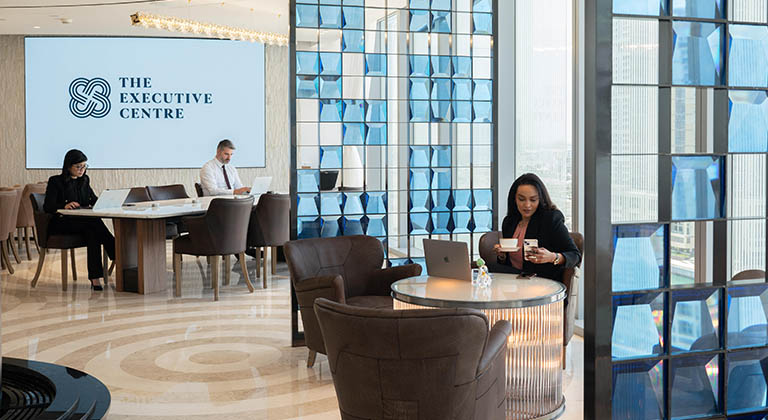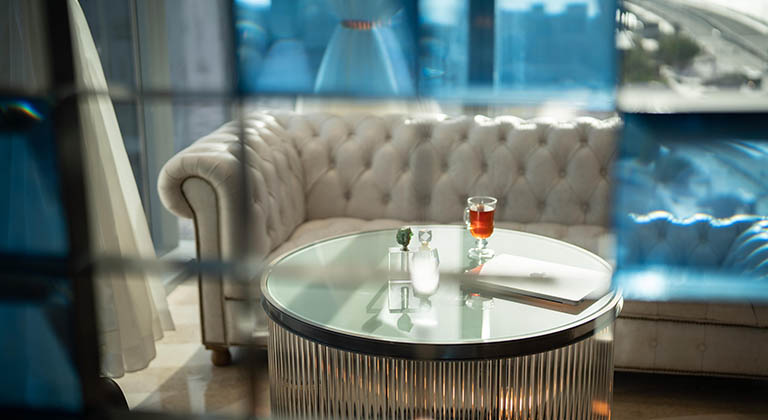Article
Sustainable Workplace Design: Meaning and Solutions
In today’s world, businesses are becoming increasingly aware of their environmental and social impact. The rise of ESG (Environmental, Social, and Governance) has created a global trend that emphasises sustainability. From multinational corporations to dynamic small enterprises, organisations are looking for meaningful ways to incorporate sustainability into their daily operations. One area where this trend is taking shape is in the design of the workplace. This article explores the meaning of sustainable workplace design, its key principles, the tangible business benefits it delivers, and the practical sustainable workplace solutions that businesses can implement to embrace a forward-thinking, responsible future.
The Rise of Sustainable Workplaces in the Era of ESG
The global business landscape is shifting as companies increasingly recognise the importance of sustainability. Whether it’s in the products and services they offer or how they manage their operations, sustainability is no longer just a buzzword but a core value. This shift is largely driven by the growing emphasis on ESG (Environmental, Social, and Governance) factors, which are reshaping corporate behaviour across industries - a trend underscored by the fact that 90% of S&P 500 companies now release ESG reports, reflecting their commitment to transparency and accountability in these areas.
As a critical component of the ESG movement, sustainable workplace design has emerged as a key focus area. A sustainable workplace not only considers the environmental impact of the space but also aims to create an environment that promotes well-being, enhances productivity, and contributes positively to society. Companies are realising that sustainable workplace solutions are integral to both the future of work and their long-term success. In this context, sustainable workplace design is not just a trend but a strategic necessity.
What Is the Meaning of Sustainable Workplace Design?
Sustainable workplace design refers to the creation of office spaces that are energy-efficient, resource-conscious, and conducive to the health and well-being of employees. It goes beyond simply using eco-friendly materials or minimising energy consumption; it encompasses a holistic approach that integrates environmental responsibility, social equity, and economic feasibility into every aspect of the workspace, aligning closely with the United Nations’ 17 Sustainable Development Goals (SDGs).
At its core, the sustainable workplace meaning is rooted in the idea that workplaces should be designed with a minimal negative impact on the environment while supporting the needs and aspirations of employees. Sustainable workplace design encompasses energy efficiency, water conservation, waste reduction, and the use of renewable resources. Moreover, it promotes health-focused practices such as better air quality, natural lighting, and ergonomic furniture, all of which contribute to the overall well-being of the workforce.
You Might Be Interested: Periods, People, and the Planet: Why Sustainable Workspaces Must Include Menstrual Health
Key Principles of Sustainable Workplace Design
To create a truly sustainable workplace, there are several key principles that organisations need to follow. These principles not only enhance the environmental performance of a space but also contribute to improving employee satisfaction and company culture.
- Energy Efficiency: Sustainable workplace solutions include maximising natural light, using high-performance insulation, and installing energy-saving systems such as LED lighting, smart thermostats, and motion-sensor lighting help reduce energy consumption. Additionally, renewable energy sources like solar panels contribute to sustainability.
- Water Conservation: Sustainable workplace designs incorporate water-saving fixtures like low-flow faucets and toilets. Rainwater harvesting systems also help to reduce water usage in landscaping.
- Waste Management: Sustainability is achieved by reducing, reusing, and recycling. Implementing recycling programs and minimising single-use plastics are vital to managing waste effectively.
- Sustainable Materials: Using eco-friendly materials such as recycled furniture, non-toxic paints, and sustainably sourced wood helps create a healthier and more sustainable workplace.
- Indoor Air Quality: Proper ventilation and the use of low-VOC materials are essential for maintaining good air quality. Green spaces and plants also contribute to better air circulation.
- Ergonomics and Health: A sustainable workplace design also prioritises employee health through ergonomic furniture, standing desks, and spaces that promote physical activity.
- Flexible Spaces: Collaborative, flexible workspaces encourage creativity and communication. By designing spaces that can easily adapt to different needs, businesses support both employee well-being and teamwork.

Practical Sustainable Workplace Solutions
There are numerous practical solutions that businesses can implement for a sustainable workplace. These solutions range from small changes that can be easily incorporated into existing offices to large-scale overhauls that involve redesigning the entire workspace.
1. Adopt Energy-Saving Technology
To create a sustainable workplace, install energy-efficient lighting, smart thermostats, and energy management systems that automatically adjust the office’s heating, cooling, and lighting based on occupancy. Businesses can also switch to energy-efficient appliances and office equipment, reducing their overall energy consumption and supporting sustainable workplace solutions.
2. Choose Sustainable Furniture and Materials
One of the core principles of sustainable workplace design is choosing furniture made from sustainable or recycled materials. Look for vendors offering eco-friendly office furniture, such as chairs, desks, and storage solutions made from reclaimed wood, recycled plastics, and non-toxic finishes. By using these materials, companies contribute to a more sustainable workplace and reduce waste.
3. Aim for Green Building Certifications
Obtaining certifications like LEED (Leadership in Energy and Environmental Design) or WELL Building Standard is a great way to ensure your office meets high sustainability and wellness standards. These certifications show your commitment to environmental responsibility, making your office a model of sustainable workplace design.
4. Promote Flexible and Remote Work Models
Supporting remote or hybrid working models can significantly reduce the need for office space, cutting down on commuting-related carbon emissions. This solution aligns with the meaning of a sustainable workplace by minimising both environmental impact and operational costs, particularly in today’s post-pandemic work environment.
5. Implement Waste Reduction Programs
Implement a comprehensive recycling program for paper, plastics, and e-waste to foster a sustainable workplace. Encourage employees to reduce waste output by minimising single-use items and providing reusable containers, water bottles, and utensils. A waste reduction program plays a crucial role in achieving sustainable workplace solutions.
6. Integrate Green Spaces and Biophilic Design
Integrating nature into the workplace through biophilic design is a great way to improve mental health and create a more relaxed, productive atmosphere. Adding indoor plants, living walls, and access to outdoor green spaces not only enhances employee well-being but also contributes to the sustainable workplace design by improving air quality and boosting creativity.
7. Install Water-Saving Fixtures
To further promote sustainability, install water-efficient fixtures such as low-flow faucets and toilets, and set up systems for rainwater harvesting to irrigate the office’s outdoor landscaping. These water-saving solutions align with sustainable workplace solutions, ensuring that resources are used efficiently and with minimal waste.
8. Design for Collaboration and Adaptability
A sustainable workplace encourages interaction and collaboration among employees. Designing open layouts and flexible workstations allows team members to move freely, interact, and engage in creative problem-solving. Providing areas with natural light and green elements can also boost creativity, energy levels, and overall productivity, making it an essential component of sustainable workplace design.
Read More: Hybrid Workplace Policy: Meaning, Trends and Challenges
The Executive Centre’s Coworking Office Spaces Fulfilling the Values of a Sustainable Workplace
Ready to embrace a workspace that reflects your values of flexibility, productivity, and sustainability? At The Executive Centre, our Coworking Spaces embody the very essence of sustainable workplace design, combining function with purpose. As businesses increasingly align with the sustainable workplace meaning, our environments are built to support modern professionals who prioritise working smarter and greener. Whether you're looking for sustainable workplace solutions that reduce your environmental footprint or a vibrant hub to connect and collaborate, TEC offers tailored Coworking Plans — including Hot Desks, Day Offices, and Global Passes — across the world’s prime business districts. Discover how TEC can help you create a truly sustainable workplace that empowers both your people and your planet. Contact us today or explore your ideal plan now.
TEC contributes to more sustainable work habits by offering a shared infrastructure model that helps reduce the overall environmental footprint of businesses. Instead of each company maintaining its own office and resources, our communal spaces, on-demand Day Offices, and shared lounges make efficient use of space and amenities.
By choosing a TEC Coworking Plan, you're also reducing commute frequency, supporting remote and hybrid work models that align with greener, lower-impact business practices. With fully furnished, move-in-ready spaces, TEC also helps eliminate the waste and resource strain associated with traditional office fit-outs and long-term leases. Discover how TEC can help you create a truly sustainable workplace that empowers both your people and your planet. Contact us today or explore your ideal plan now.

Frequently Asked Questions
The core sustainable workplace meaning refers to creating office spaces that holistically prioritise environmental responsibility (e.g. energy efficiency, waste reduction), employee well-being (e.g. air quality, natural light, ergonomics), and long-term operational efficiency. It's an integrated approach that benefits the planet, people, and business performance.
A sustainable workplace enhances employee satisfaction, promotes environmental responsibility, and helps businesses meet long-term financial goals. The benefits include reduced operational costs through energy efficiency, improved employee productivity, and better talent retention. Additionally, companies that embrace sustainable workplace solutions can enhance their brand image and appeal to environmentally-conscious consumers and investors, fostering greater corporate reputation and growth.
Companies can implement sustainable workplace solutions by adopting energy-saving technologies such as LED lighting, installing water-efficient fixtures, using eco-friendly furniture, and encouraging remote work or hybrid work models. Other strategies include implementing waste reduction programs, obtaining green building certifications like LEED, and incorporating green spaces such as indoor plants and living walls. These solutions not only reduce environmental impact but also enhance the overall workplace experience for employees.




